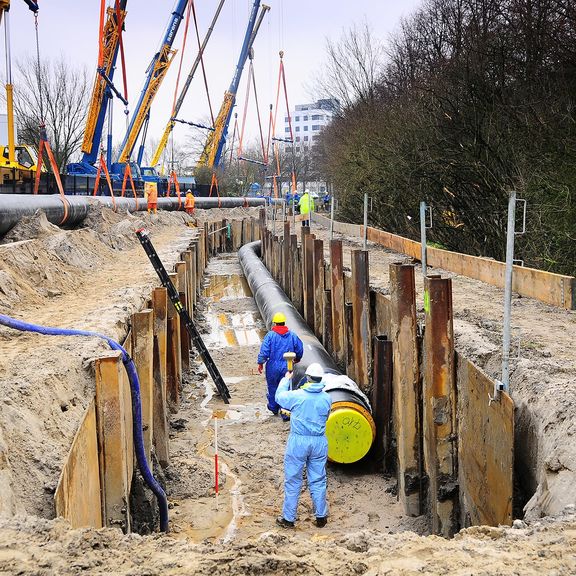
Rotterdam-Moerdijk infrastructure projects
In the first Cluster Energy Strategy (CES) Rotterdam-Moerdijk eight key projects have been identified that are catalysts for the energy transition in the region and, at the same time, important for the national economy and our country's future earning capacity.
A working group including representatives of Deltalinqs, the Province of Zuid Holland, the Moerdijk Port Authority, Stedin and the Port of Rotterdam Authority (chair) analysed the industry's future energy flows and sustainability plans. In addition, the working group looked at maintaining and, where possible, strengthening the strategic position of Rotterdam-Moerdijk in North-western Europe. This resulted in eight projects being selected.
Brief descriptions of the eight projects
1 The first project concerns a hydrogen backbone through the port of Rotterdam. Hynetwork Services integrates local production, import of large volumes of hydrogen from other parts of the world and transit towards hinterland. In the future, there will be considerable demand for hydrogen in North-western Europe that can only be met by imports. Rotterdam's current strategic role in predominantly fossil flows can soon also be addressed in the new energy system. This project is being developed by Gasunie and the Port of Rotterdam Authority.
2 The second project - Delta Corridor - also has an international dimension as it focuses on strengthening the infrastructure of Rotterdam via Moerdijk/Geertruidenberg to Geleen and the connection to North Rhine-Westphalia. A new pipeline corridor for hydrogen, CO2, LPG, propylene, and possibly also direct current and circular raw materials, facilitates sustainability projects in Moerdijk, Chemelot and in Germany and helps Rotterdam maintain its position as an energy hub for North-western Europe.
3 The third project concerns landing additional power from offshore wind farms (≥ 2 GW) and the plans of grid operators to boost the electricity grid's capacity. This contributes significantly to making green electricity available for the production of green hydrogen and as a basis for, among other things, shore-based power and electrification in the process industry. This also involves expanding capacity in line with the investment plans of grid operators and the vision documents 'A port full of new energy' and the Moerdijk E-Master Plan.
4 The fourth project involves Porthos, the construction of main infrastructure for transporting CO2 and storing it in depleted gas fields under the North Sea. Porthos is crucial for drastically reducing emissions from industry in the short term.
5 WarmtelinQ is the next project on the list. This project, by Gasunie and the Port of Rotterdam Authority, provides a transport pipeline for heat from the port of Rotterdam to homes, offices and greenhouse horticulture in the Zuid Holland region. Heat from the port can replace natural gas as a source of energy and thus facilitate the energy transition in the built-up environment and greenhouse horticulture.
6 H-vision, the project that aims to develop plants for producing and transporting low-carbon hydrogen that can be used as a fuel, particularly in industry. H-vision is planning three product pipelines for the supply of industrial residual gas that forms the basis for producing, discharging CO2 and transporting the low-carbon hydrogen to customers.
7 The seventh project concerns shore-based power. Shore-based power supplies quayside vessels with electricity. This allows docked ships to switch off their engines, reducing CO₂, nitrogen (NOx) and particulate matter emissions. What is more, shore-based power also reduces noise pollution from ships in the immediate vicinity.
8 The last project on this list. Hydrogen-based sustainable transport corridors between Rotterdam, Belgium and Germany (RH₂INE and HyTrucks). RH₂INE and HyTrucks are accelerating the transition to zero-emission transport by developing hydrogen infrastructure along the various routes. Complementing the above hydrogen-powered transport corridors, since 2021 the first inland vessel has also been operating on electricity using interchangeable battery containers from Zero Emission Services (ZES).
More information? Contact:
